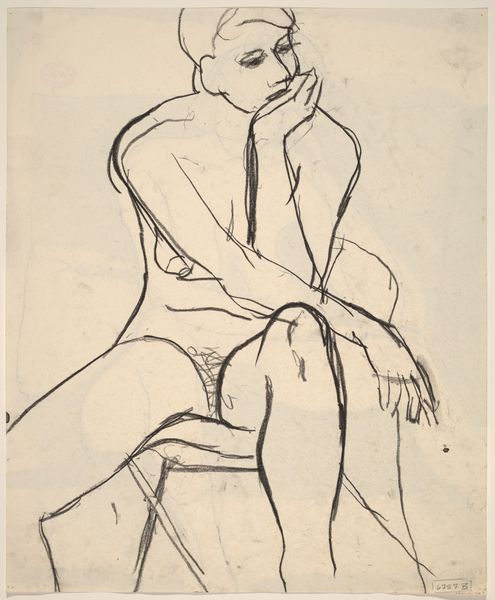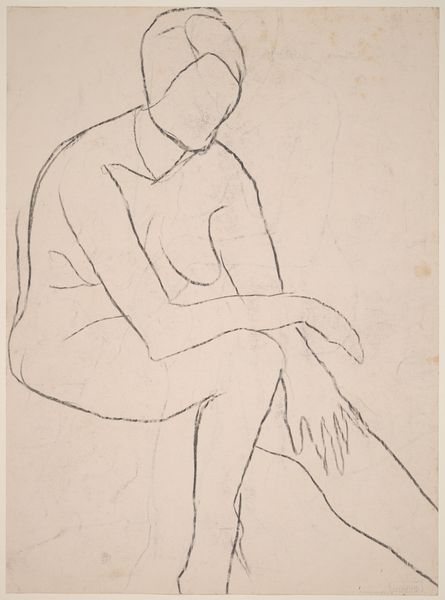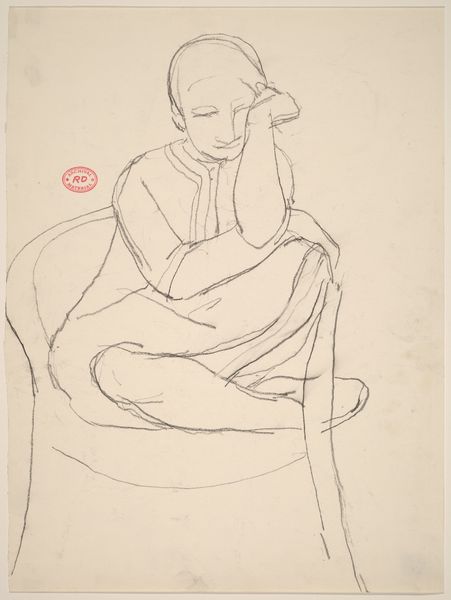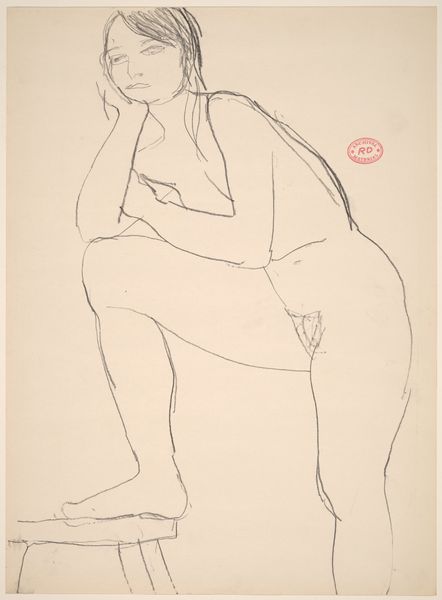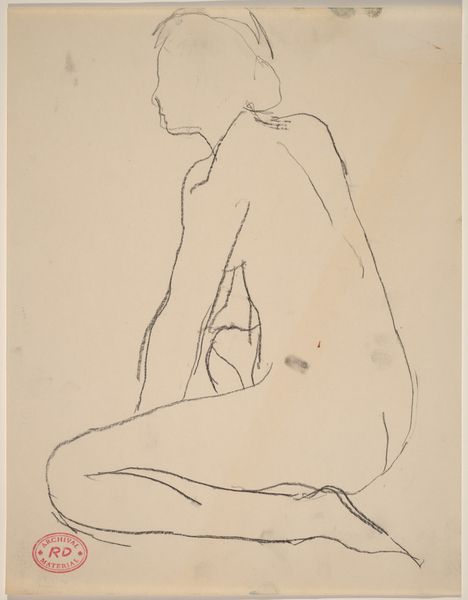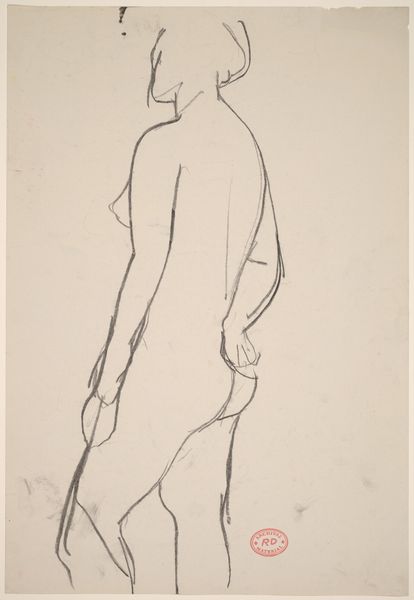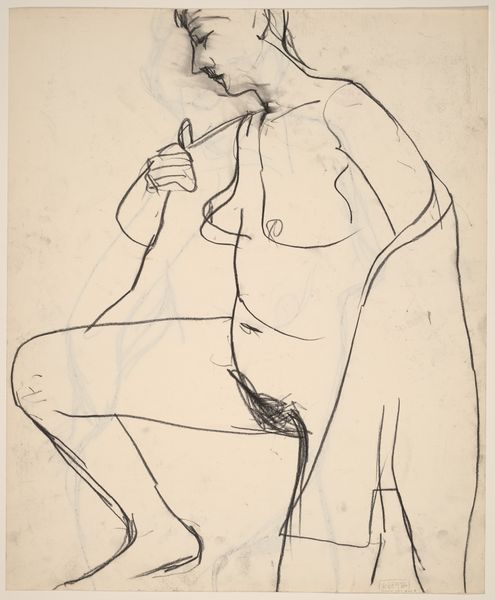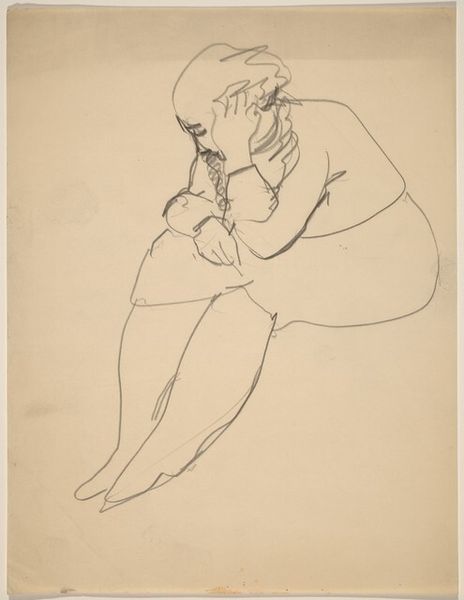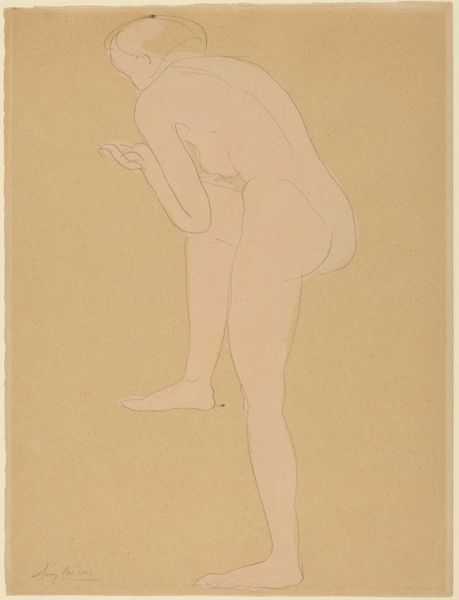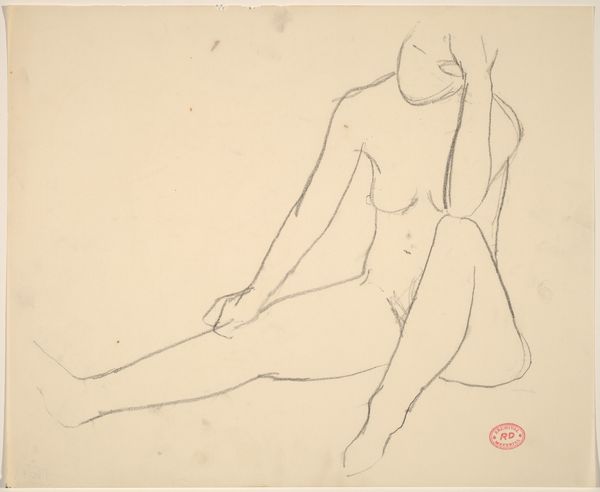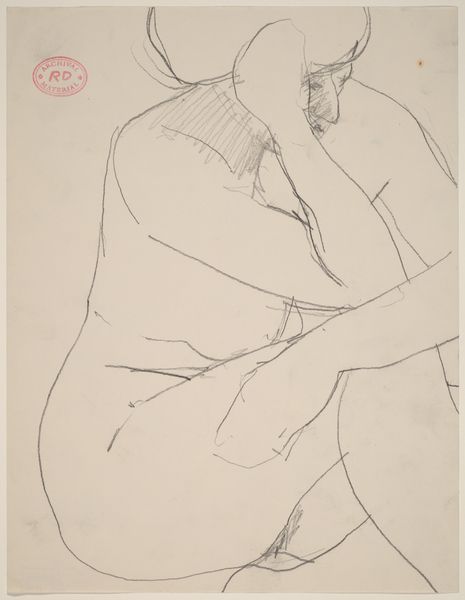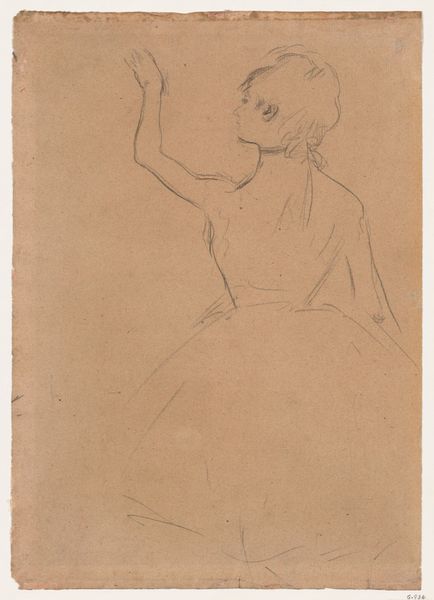![Untitled [female nude with arms crossed on chair back] by Richard Diebenkorn](/_next/image?url=https%3A%2F%2Fd2w8kbdekdi1gv.cloudfront.net%2FeyJidWNrZXQiOiAiYXJ0ZXJhLWltYWdlcy1idWNrZXQiLCAia2V5IjogImFydHdvcmtzLzI1NWYxZWM4LTA5ZmYtNGU1ZS1iYWVjLWMzYTI2ZWVlNmZlMy8yNTVmMWVjOC0wOWZmLTRlNWUtYmFlYy1jM2EyNmVlZTZmZTNfZnVsbC5qcGciLCAiZWRpdHMiOiB7InJlc2l6ZSI6IHsid2lkdGgiOiAxOTIwLCAiaGVpZ2h0IjogMTkyMCwgImZpdCI6ICJpbnNpZGUifX19&w=3840&q=75)
Untitled [female nude with arms crossed on chair back] 1955 - 1967
0:00
0:00
drawing, charcoal
#
portrait
#
abstract-expressionism
#
drawing
#
figuration
#
bay-area-figurative-movement
#
line
#
charcoal
#
nude
Dimensions: sheet: 42.9 x 35.2 cm (16 7/8 x 13 7/8 in.)
Copyright: National Gallery of Art: CC0 1.0
Curator: This drawing by Richard Diebenkorn, dating from sometime between 1955 and 1967, presents a female nude in charcoal on paper. The figure is seated, with her arms crossed atop what appears to be the back of a chair. Editor: There's a palpable sense of weariness or introspection conveyed through the woman's posture. The rough lines almost give the sense that she has been captured at an unguarded moment. Curator: Right, and it's worth considering Diebenkorn’s process here. The seemingly casual line work is very deliberate. His choice of charcoal allowed for easy reworking, a crucial element as he repeatedly re-examined the relationship between the figure and its surrounding space. Note how the negative space around her defines her form as much as the charcoal does. Editor: Absolutely, and one might also examine how Diebenkorn positions his subject within a history of female nudes. The gesture of the arms crossed above, supporting the head, hints at a negotiation of power. Is this meant to project agency or reveal vulnerability in mid-century representations of the female form? What dialogues does this figure spark regarding female experience during that era? Curator: Also important, the scale suggests the availability and accessibility of the materials themselves: this wasn’t an exercise in large-scale art production. Consider the market for drawings versus painting; this probably allowed Diebenkorn a more intimate relationship to production and possibly fewer external pressures from galleries or patrons. Editor: Which provides, potentially, a greater avenue to personal expression and perhaps a subtle revolt against the canon and patriarchal forces that were defining female beauty within art during this period. She is unglamorous, possibly even melancholic. Her body is rendered without overt sexualization. Curator: These drawings were part of Diebenkorn's continuous investigation of form and space—an underpinning of the Bay Area Figurative Movement. The gestural marks belie their carefully worked over quality. Editor: It encourages us to reconsider the common and accepted definitions of femininity prevalent during this period. It reframes conversations, and that makes it particularly potent, don’t you think? Curator: Definitely. Seeing how process intersects with the artist’s engagement and its reception shifts our appreciation. Editor: Precisely! It invites us to reconsider not just the aesthetic choices but the deeper sociocultural narratives woven into every line.
Comments
No comments
Be the first to comment and join the conversation on the ultimate creative platform.
